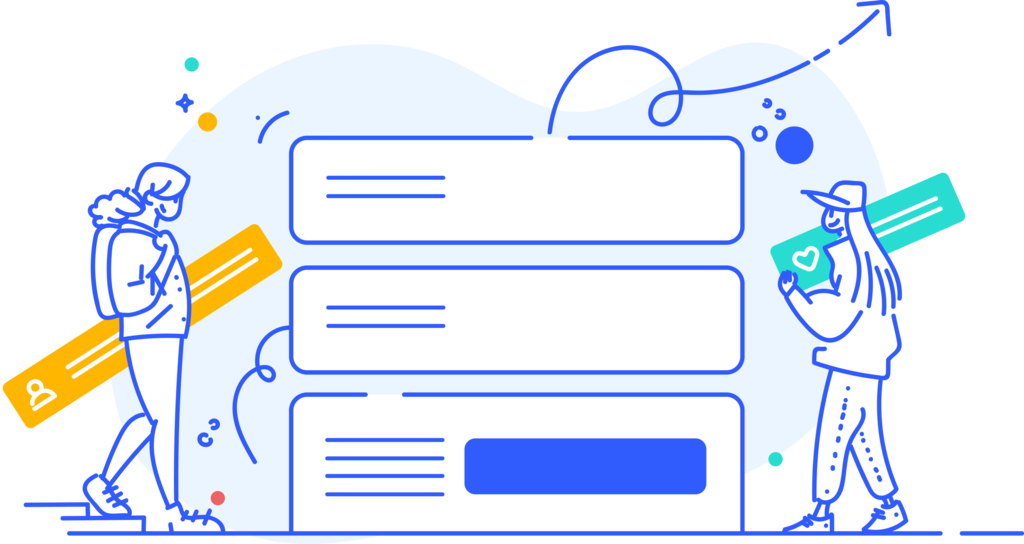
In this guide
Actionable insights at every stage of development
Actionable insights at every stage of development

Practical use cases for every team
With the UserTesting Human Insight Platform, you can get fast feedback from your customers or other audiences to fully understand what people think about your products, your digital experiences, and any other interactions they have with your brand. This can reveal problems and challenges you didn’t know existed as well as open up your understanding of new opportunities and improvements to tackle. By providing a solution that covers unmoderated testing as well as live interviews, targeting our on-demand network of participants or your private audiences, the UserTesting platform can support a wide spectrum of use cases across different teams—from UX and Product to Marketing.
This guide has been developed to share some common use cases and stories of how our customers have used UserTesting to gather fast and relevant insights to:
- Get started on the right foot
- Launch successfully
- Drive ongoing wins
- Optimize content
- Increase customer empathy
Get started on the right foot
In the world of software development, there is a saying (seemingly adapted from a quote from architect Frank Lloyd Wright), “You can use an eraser on the drafting table or a sledgehammer on the construction site.” In essence, problems can be discovered and easily corrected when in draft format, or they can be forcefully adjusted (at a loss of time and money in the process) when at a more complete stage. By getting customer and other critical stakeholder feedback early in your process, you gather the data that helps you make more informed decisions when everything is greenfield and focus on the efforts that drive the best outcomes.
Needs discovery
During the discovery phase, this is a great opportunity to better understand your customers—yet this is often perceived to be a time-consuming endeavor and is often skipped in product development. Talking to customers during early-stage discovery could mean identifying and getting to know different personas, or understanding high-level pain points.
Regardless of your goal, as soon as you have a concept in mind, even if it’s just a sketch on a whiteboard, run a few quick tests with customers and potential customers to validate that you’re on the right track. Gathering customer insight early on can save time and budget later on in development—not to mention avoid the risk of building a product no one wants.
How to do it
Remote, live customer interviews are a great place to start during early-stage discovery and validation. Gathering feedback via interview enables your team to have open-ended discussions about a variety of topics, ask customers about their habits, and even have them complete specific tasks (with guidance if they get stuck). Interviews also enable teams to ask follow-up questions and observe non-verbal cues, helping them quickly gather critical insights that will drive more informed decisions.
Teams can also benefit from remote, self-guided tests as well. At this point in your development, you might not have a product to test, but that’s OK. This is a great time to do some competitive research and discovery to gain a better understanding of how customers currently interact with what’s available—and what they like or dislike about those products or experiences.
Tests don’t have to be complicated, either. They can be as simple as asking your target audience how they currently perform a particular task with your competition, and how they feel about that experience. Or, you can ask about their everyday lifestyle and habits, and their thoughts on a particular product.
In the following video, see the UserTesting Participant Network in action, and how they evaluate mobile experiences—from first impressions to site satisfaction.
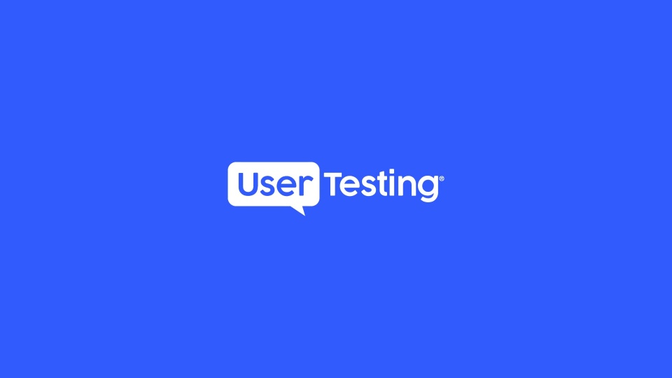
The insights you’ll uncover will give you a fast (think hours, not days) gut check early in the development process—before any code has been written. This ensures your team moves forward, equipped with data to support a confident decision.
If you're feeling inspired, you can get candid feedback to help validate new concepts or ideas right away with a test template. Click below to get actionable insights fast.
Concept validation template
 Understanding needs drives 32% improvementCode for America conducted extensive needs discovery of their two customer audiences—probation officers (POs) and individuals on probation or other pre-trial supervision—when designing an improved messaging app. The trial of their ClientComm app saw a 32% improvement in pre-trial success and an 8x increase in communications between POs and their clients. Read customer story |
More efficient A/B testing
When you run an A/B test, you’re pitting two designs against each other to see which one people prefer. However, a research study showed that only one of every eight A/B tests leads to significant change. If you’re constantly running A/B tests without a game plan and failing to see clear winners or get statistically significant results, you should consider getting qualitative feedback before finalizing on designs. Get direct customer feedback first to hone in on the greatest pain points and areas of opportunity, then A/B test variations to strategically fine-tune your experience.
- Generate ideas about what to A/B test. Like needs discovery, get a sense of your customers’ preferences and expectations before narrowing down specific options to A/B test.
- Get qualitative feedback before you A/B test, to ensure that you are in the right “neighborhood” before you hone in on the exact “house.”
- Understand why customers voice a preference for one design or image over another.
Qualitative insights are great when paired with analytics or quantitative metrics you may be tracking. Together, they can provide a fuller understanding of the reasons (the ‘why’) behind user behaviors.
For inspiration, you can add context and depth to your quantitative data—and develop more targeted A/B testing ideas, by pairing human insight with your data. Try a test template to understand what converts.
Website conversion template
Prototyping
When you have some early sketches or designs, gather feedback to validate usability before investing resources to build it out. Does the design make sense? Is it clear and intuitive to the user? And if you find out that something in your early designs is really problematic, you can change it and then test again to see if it’s a better experience, before proceeding to development or production.
Can’t decide on a single design? You don’t have to! Ask test participants to evaluate multiple design ideas in a single session. Continue to iterate, getting feedback as you hone in on preferred design(s).
How to do it
If you have a more complex design that might be confusing or isn't fully functional if presented during a self-guided test, a live customer interview is a great option. Presenting your designs during a live interview offers you the best of both worlds: giving you control over when, where, and with whom your designs are shared and allowing you to guide test participants should they encounter challenges.
The flexible and dynamic interaction gives you an unrestricted opportunity to gain insights. This can help you radically reimagine and redesign your product before any development begins.
In the below video, we rounded up examples of participant feedback on prototypes, where our customers could evaluate if they were targeting the right audience or identify technical issues.
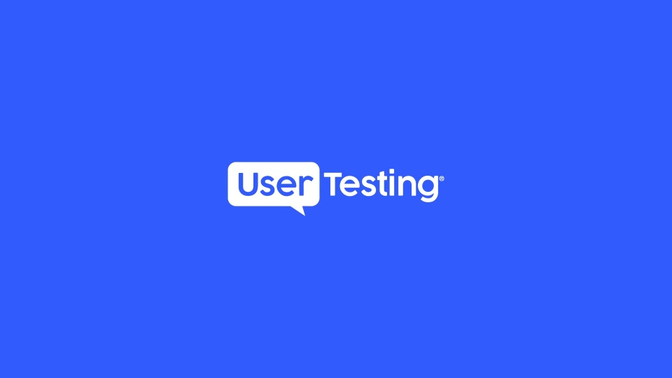
If you're short on time, self-guided tests are also a great option at this stage of development. Provide a link to your design from your chosen design tool or hosting solution, or if secure prototype hosting is an option, you can upload your prototype directly to your insights platform and ask for feedback.
If you're feeling inspired, you can observe people using a pre-production experience with the prototype evaluation template below.
Prototype template
Survey validation
Releasing a poorly designed survey can waste money and invalidate your results. You don’t want to get back responses that are irrelevant or fail to inform next steps because respondents had a different understanding of your questions. Test the design and questions for comprehension first, ensuring they’re clear and result in the types of responses you are expecting, then release it into the wild.
Test your survey before you launch by validating your proposition and ensuring your survey resonates with your audience with the template below.
Value proposition validation template
Mobile app validation and design
Designing the next killer app? Get feedback to make sure your app appeals to your target audience. Validate the concept, perfect the first-time user experience, and even pre-test app store images and copy to see what drives downloads.
Assess critical app characteristics like ease of use, appearance, and trust with the template below.
Mobile app evaluation template
Customer journey mapping
You've probably heard the saying, “It’s not about the destination. It’s about the journey.” But do you really understand your customers’ journeys—the challenges that they encounter and the decisions that they make when interacting with your brand?
By observing customers and prospects—from initial perception to final steps in their decision-making process—you’re in the passenger’s seat in understanding the customer journey. These insights can help you generate ideas on what to change to improve everything from awareness to conversion.
Understand how your customers engage with your brand or products across multiple touchpoints with the template below.
Customer journey template
 AutotraderBy conducting customer interviews using Live Conversation, Autotrader made a major discovery about their customers’ buying journey. Learning this helped them shed “institutional myths” and re-think content on their webpages. Read customer story |
Launch successfully
You know the moment: everyone’s huddled around, eagerly anticipating the moment that you push the proverbial button and all the months of hard work go live. And if you’re like most folks, you have also gone through the experience where things don’t necessarily go to plan, and you’re left scrambling trying to patch up an unforeseen problem. Ensure go-to-market success by getting feedback prior to launch, whether it’s a new product, feature enhancement, marketing campaign, or another project. Get confirmation before you go live so you can launch with confidence.
Mobile validation
Your web or app can render very differently according to device type, screen size and operating system. Get confirmation based on these criteria to ensure users, across all different technologies, have the same positive experience.
Mobile is an important part of any successful company's strategy—but it's just one piece of a larger puzzle. At the heart of every successful company is a customer-centric mindset that relies on human insights at every stage of development, on every device, and on every channel to keep creating great experiences for their customers.
Testing your mobile experiences with real users throughout your development cycle will help you discover the drivers of behaviors on mobile, including why users abandon apps, what fuels frequent usage, and how you can improve experiences to drive greater adoption. Not sure what customers think of your mobile app? Try the template below and get actionable insights fast.
Mobile app evaluation template
 UdemyWhile doing a diary study of their mobile users, Udemy made an interesting discovery as to why (and also where) learners choose to rely on mobile over other devices. Read customer story |
Pre-launch
Whether it’s perfecting your pitch or making sure that your product is something that people will want, buy, and can use, UserTesting is a great solution for presenting concepts and ideas to potential customers to get feedback before you go live. Seeing a user struggling with your potential web or mobile experience gives you the much-needed evidence to revisit and revise before you launch.
Get feedback as you reach each milestone to ensure that you end up where you planned. And if feedback indicates there’s a problem or something that requires attention, you have the opportunity to fix these issues before proceeding to the next milestone. Studies show that problems that are discovered and fixed after a product release have up to 100x the cost compared to when issues are identified and addressed while in development. Reduce risk by testing with your target audience throughout development—especially prior to launching.
De-risk product decisions templates
 AdobeAdobe released features that they knew customers wanted but the immediate feedback wasn’t what they expected. Learn how user feedback helped them make updates that better matched customer expectations. Read customer story |
Drive ongoing wins
Once you’ve released your product or campaign, what do you do? You sit back, relax and enjoy the spoils, right? Of course not! In today’s fast-moving and competitive market, you have to keep moving, iterating, and innovating. Gather information to understand your customers’ evolving needs, and to get valuable insight on what your competitors are doing, to stay ahead and continue providing what your customers want and expect.
Competitive intelligence
Are you just dying to know: what is your competitor’s secret sauce? What is giving them the edge? Our participantnetwork of real consumers will give you the whole truth and nothing but the truth about what’s working for competitors and areas where you may be falling behind. When you understand your competitors’ kryptonite (or their competitive advantage), you can make the improvements that help you surge ahead and win more business.
Learn how customers feel about your competitors and uncover how your experiences can outperform.
Competitor evaluation template
Ecommerce optimization
Wondering where customers are getting tripped up, why they are dropping off and why conversions aren’t happening? By watching a recording of the customer’s screen and hearing them explain why they are making the choices they are, you gain a deeper understanding of customer intent, expectations and the challenges they experience. Insights inform optimizations from start to finish.
Address customer drop-off and abandoned shopping carts with the template below.
Ecommerce and shopping cart experience templates
 WalmartThe Walmart.ca optimization team needed to align on a method and plan for prioritizing site updates. Read how UserTesting helped the team identify the most impactful digital improvements—boosts revenue by 13% from improvements on just one page. Read customer story |
Strengthen quantitative data
Many quantitative tools show in aggregate what users are doing on your site. You know what a large audience is doing, but you don’t know why. By helping you understand how real customers use your site or mobile app, UserTesting provides the true voice of customer that complements analytics data. You get critical context about the root of the problem to effectively triage and design solutions.
Try asking customers to evaluate popular landing pages to address conversion rates and optimize pages based on feedback. Try the landing page conversion template for fast insights anyone can leverage for targeted improvements.
Landing page conversion template
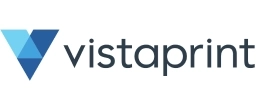 VistaprintVistaprint saw a 16% spike in page exits following a website update. But the analytics data alone couldn’t explain why this was happening. Learn how qualitative insights helped them explain why customers were leaving at higher rates and the changes they made to prevent it. Read customer story |
Optimize content
Content that's clear, engaging, conveys a point, and is well organized is more likely to be consumed. You’ve made it this far in this use case ebook so you really can’t disagree. Whether it’s a marketing campaign or in-product messaging, it’s critical to provide the right content experiences to engage and educate customers, to encourage expected behaviors or workflows.
Cart sort and information architecture
Just as a new building needs a strong foundation and a logic to its layout, the same is true for the presentation of your ideas and concepts. Whether you’re redesigning a complex web or mobile application or curating website content for prospective buyers, get insight on optimizing information architecture, so that you are effectively guiding customers through layers of information to ensure an optimal workflow or a customer journey that ends in conversion.
Learn from your audience as they group content and label categories with the card sorting template below.
Card sorting template
Site design validation and discovery
Just as the actual content on your website matters, equally important is the layout and display of that information. Putting too much or not enough can result in feast or famine. Get customer reactions to understand how much information is enough to effectively compel audiences, to optimize the design and layout according to their needs and preferences.
Understand how much information is enough to optimize site design and layout and effectively compel customers to engage with the template below.
Website evaluation template
Ad creative and messaging validation
The best ads capture the human experience and touch customers at an intellectual and emotional level. And the worst? Well the worst ads are created based on a misguided understanding of how to connect with customers and often end up dissected and derided on social media. Get feedback on whether your ads resonate with your target audiences before you launch. Ensure that the response you’re expecting is the response that you get.
Make sure your ads resonate with your target audiences before you launch, using the template below.
Ad testing template
Site content validation and discovery (SEM/SEO)
Presenting easy to find, compelling and relevant content—and in the moment that customers are searching for it—is key to communicating your product and brand’s worth and convincing customers to choose your offerings. With qualitative feedback, alongside other analytics data you may be using, you can better understand the ideas and topics your customers are looking for to inform your content strategy.
Use the template below to understand the topics your customers are searching for and pair with analytics data.
Needs and discovery template
Real-world experiences
Ever wish you could be a fly on the wall and watch your customers as they went about activities and decisions? And even better: if you could read their minds to better understand why they do the things they do? Using the back-facing camera on their phones, consumers record their experience at home, in-store (shop alongs), competitor stores, or really anywhere, giving you the most direct view of how they live and make decisions.
Gain the most authentic lifestyle insights, observing as customers freely move about in their native settings with the template below.
Customer environment and context template
Improve customer empathy
When it comes to creating a world-class customer experience, you need to mind the gap—the experience gap, that is. But before we dive right in, let’s first set the stage. Briefly, don’t worry.
The CX industry is constantly evolving—to keep pace with the needs of consumers. A global economy means businesses are forced to pivot and adapt—one day, that might be due to a global pandemic, and the next it'll be something different. So whether you’re building the next best SaaS product or redesigning your mobile banking app, the old motto still rings true: you are not your user.
Despite the success you’ve had so far, there’s always so much to learn about your customers. And believe it or not, most brands aren’t as customer-centric as they think. Enter, the empathy gap.
Bridging the Experience Gap
Despite significant investment in digital tools and platforms, many organizations still struggle to meet evolving customer expectations. This persistent disconnect—known as the experience gap—arises from common issues such as a lack of timely customer feedback, internal misalignment, and a fundamental misunderstanding of user needs. While 87% of companies believe they deliver exceptional customer experiences, only 11% of customers agree. In today’s competitive landscape, closing this gap is essential—especially as companies that lead in customer experience grow their value at five times the rate of their peers.
Collect customer feedback to close the experience gap
It’s nearly impossible to predict the needs and actions of others. Which is why you probably shouldn’t. While it’s true that great product ideas can be stumbled upon, the most successful, lasting ones need testing and iterating to meet the needs of a wide audience, not just the needs of some.
If you haven’t guessed already, there’s no better way to understand what your customers need than by asking them. Here are a couple of tried-and-true methods for doing this that can save you time, money, and resources.
It’s hard to overstate the value to a UX team of truly understanding customers, and helping them develop real empathy for what that user is going through, either on the site itself or the process.”
— Bradley Miller, Senior User Experience Researcher
 UdemyThe world’s largest online learning and teaching marketplace conducted a diary study in order to observe mobile learners in their native environments. Learn what Udemy discovered about how, when and why people use mobile devices when completing online courses. Read customer story |
Let your customers be your North Star
Finally, it’s worth mentioning that while the steps of product development or any project plan are often presented as linear, in reality, inspiration and challenges can crop up anywhere and at any stage. It’s rare for a team to follow the process from start to finish.
If, in the course of development, you get feedback that creates the opportunity to pivot and change direction or creates an offshoot project for another team to pursue, these are moments to regroup and decide how to proceed.
The point is to let feedback from your customers be your guiding light—your proverbial North Star—to ensure that all the work, time, and other resources you put into creating newer and better experiences align with what your customers want.
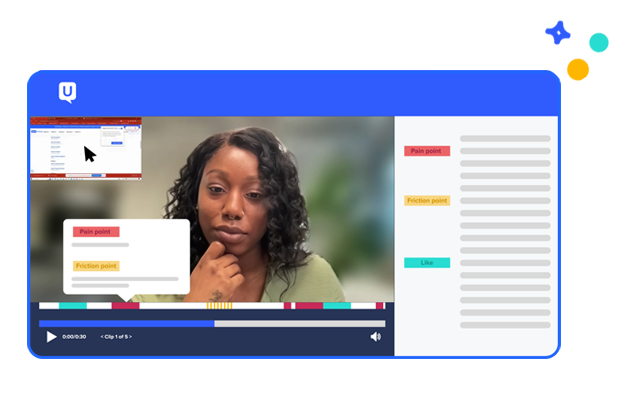
Get actionable insights today
Uncover human insights that make an impact. Book a meeting with our Sales team today to learn more.